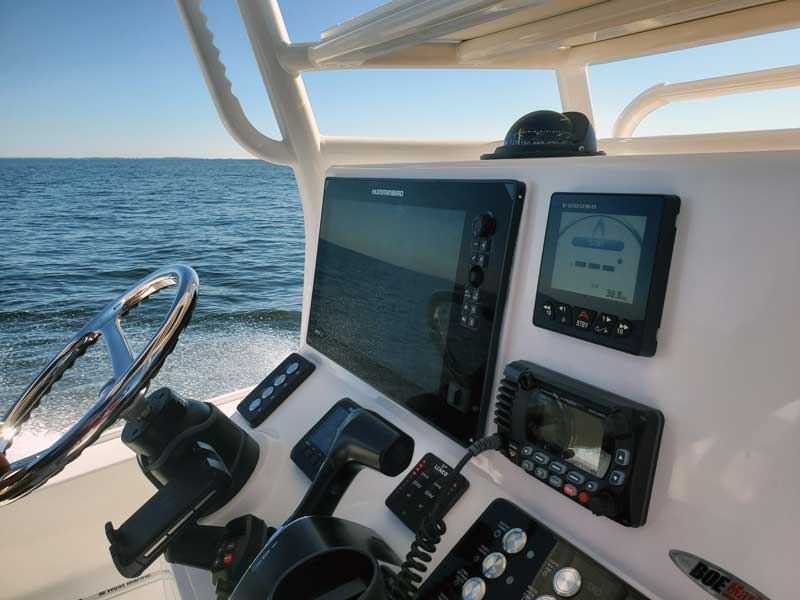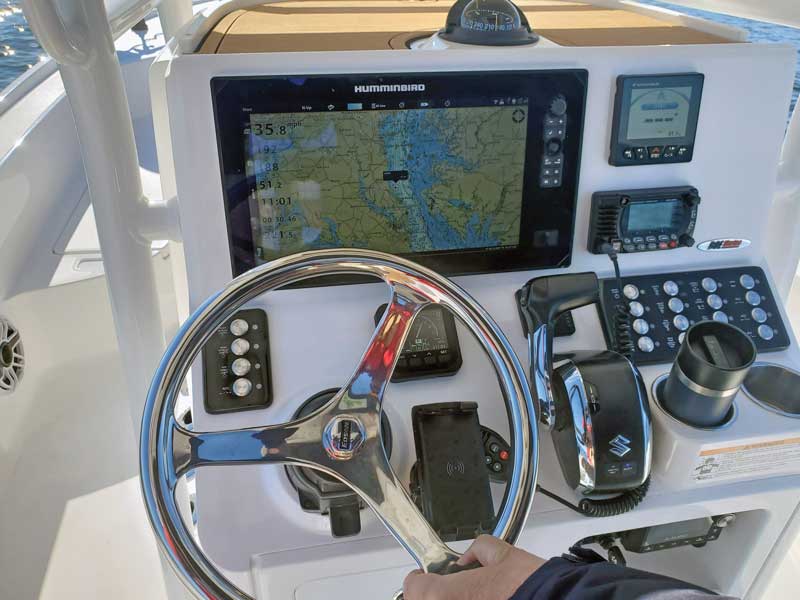Marine electronics have changed quite a bit over the past decade. Many boat owners are at that critical stage of: “Do I replace it all, or just the MFD, etc.?” With so many new devices on the market and such bright, beautiful displays, one can’t help but be starry eyed.

Once you’ve decided that the big ‘all in one package’ is not in the plans this year, you move towards replacing a portion of your vessel's electronics system. Let's say you are going to replace just the multi-function display (MFD)/chartplotter and try to leave the rest. The next big question is what's going to work, and what’s not going to work? This is the important thing to think about: integration.
When it comes to integration, I look at it in two parts. First is sharing simple data, like GPS coordinates or water temperature, across the system. Second is sharing complex data, like video or radar, across the system.
Simple Data
Let’s focus on simple data first. For many this will be the less challenging of the two. The National Marine Electronics Association (NMEA) has been around for over five decades. Many years ago, they began developing a standardized protocol for marine electronics manufacturers to use. This protocol created a universal way for electronics to share information between different manufacturers. Since NMEA began they have had four iterations including NMEA 0180, 0182, 1083, and currently NMEA 2000. There is also work in place for the next generation, ONE-NET, which should be here in a few years.
The current Version, NMEA 2000, is used for moving simple data and has been around since around 2005. What this protocol does is allow marine electronics to both generate and receive simple data, such as numbers, to everyone on the network at once. Remember, no complex data (like video) can travel through this network. That’s very important to understand. What does that mean? Here is a list of some of the data that can travel through NMEA 2000:
- GPS Position
- Fuel levels
- AIS data
- Course over ground
- Engine RPM
- Outside temp
- Water depth
- Engine oil pressure
- Outside humidity
- Water temp
- Trim tab level
- Wind data
Consider everything as there are thousands of these data points. Each one is given a number, called a PGN, and each PGN is associated with a data point.
So now we know that if your boat currently has a NMEA 2000 system, 95 percent of the new marine electronics items you might be looking at will be NMEA capable. Everyone currently supports the NMEA protocol; a few might require a small box to generate it though. So, as I said earlier, the simple data side is the easy part. With NMEA the headache is taken care of. Build the NMEA network, make sure the devices can and are receiving or generating the correct PGNs you are looking for, and you are done. You can match a Garmin AIS to a Raymarine chartplotter. In the back of almost all marine electronics manuals and on most websites, you will find a list of supported PGNs.
The important part of this comes into play with autopilots. All the data a functioning autopilot system needs is a few PGN codes, and it can work standalone. An autopilot does not need a chartplotter as it is built to function all on its own. It can get GPS location, heading, and rudder feedback all through NMEA.
One final note on NMEA: if your boat doesn’t currently have a NMEA 2000 system and is, say, still using the last generation NMEA 0183 system, it is still possible to upgrade. The trick is you need a NMEA 0183 to NMEA 2000 converter. This will take in the old 0183 data and convert it to 2000 for your new equipment to process. It works the other way as well. Now this is where things get tricky—it can sometimes take a lot of work to get all the devices communicating. This is where it might be time to get the system replaced, due to costs.

Complex Data
Now we get into the complex data side of things. Here is where things get sticky. Marine manufacturers seem to refuse to share video data with each other. Each manufacturer has its own proprietary video network to share radar and sonar data. So therein lies the problem. You can’t replace the Raymarine chartplotter with a new Garmin and expect the radar portion to still function. The same applies to a system where it uses an external black box to process sonar data. These units are also processing complex data and sending it along the manufacturer’s proprietary network.
Now most chartplotters have an HDMI or BNC connection on the back to take in complex data. That is not the type of data we are referring to. The data we are referring to allows us to not only view it but manipulate it, meaning control the radar and the sonar. With HDMI and BNC, you can send in a picture, but you have no control over it.
Backwards Compatibility
The final part of this is backwards compatibility, which is the ability to connect to legacy or outdated equipment of the same manufacturer. Say you want to replace your old Garmin screen connected to an old radar. In this case you might be able to upgrade just the screen. This is where things look bright again. Most manufacturers at this point are supporting their older equipment from 10 years ago. Every manufacturer and part are different, but I find the average to be around seven to 10 years.
This backwards compatibility helps tremendously with integration. If you like your current manufacturer and your equipment is recent, there is a good chance you can connect the new Raymarine screen to your old Raymarine radar.
Transducers
Now on a final note, let’s talk transducers. Things can be a bit muddled here, but there is some logic. “Most” transducers found on older boats are going to be made by a company called Airmar. Some marine electronics companies over the past five to 10 years began coming out with their own versions, due to costs. This will generally be a small transducer mounted on a transom. More than likely this type of transducer will be part of your new MFD upgrade. So, I’ll focus on trying to keep the current Airmar transducer with your new MFD.
Over the years transducers have changed a bit, but their basic internal functioning is the same. The good thing about that is every manufacturer offers a “bare wire box” to splice your old transducer. If you have a Simrad system and want a Raymarine MFD, Raymarine offers a box—you can cut the Simrad connector off, connect it to the small weatherproof box with a terminal strip inside, and plug the pigtail coming out of it into the new Raymarine MFD. The manufacturers were smart enough to understand that changing the transducer is often the hardest part of an upgrade and they needed to make that easy. They preload Airmar’s transducer list into the MFD and will often even allow you to manually program transducer configuration.
Now I’ll end the discussion with these four notes:
- The above discussion will apply to 90 percent of the applications. For boats that have rarer/more complicated systems and/or high-performance systems, the above generalizations might not always apply.
- If you are purchasing equipment for a DIY installation, make sure to seek out a reputable supplier that will be a phone call away. When you have complications or need to return something, you want them to support you.
- If you are performing a DIY installation, please review and adhere to the NMEA and ABYC guidelines. Assume nothing, and safety is a must with electricity on a vessel.
- If you are not performing a DIY install and working with a dedicated marine electronics installer, make sure you and the outfit you hire have the upgrade clearly outlined and that they are following the above guidelines.
By Richard Hawse